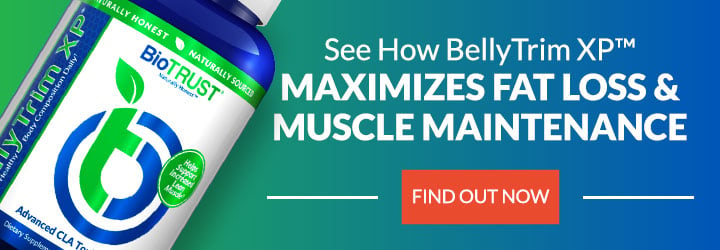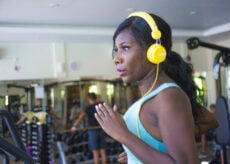Cardio is NOT Best for Fat Loss…Do These 2 Things Instead

When you think fat loss, you may immediately think you need to do copious amounts of cardio. But, as it turns out, cardio is not best for fat loss… instead, you need to do these two main things:
Use Resistance Training For Fat Loss
While there are many strategies you can employ to lose body fat, one of the best is lifting weights to burn calories, increase your metabolism, and put on muscle mass.
Why are all of these so important when it comes to fat loss? Let’s start with the reason you want to build muscle in the first place. You’ve undoubtedly seen “skinny fat” people; that is, people who look slender in clothing but if you see them in a bathing suit, they are very soft with no muscle tone to speak of. People like this will have a harder time keeping off the pounds, especially as they get older, because they have more fat than lean mass. That means their metabolisms are slower than someone of the same size who has a higher percentage of muscle.
You see, fat does not burn calories, nor does it need calories to survive. This means the more fat you have on your body, as opposed to the same weight in muscle mass, the fewer calories you need to maintain your weight. Whereas someone with more muscle on their frame is going to need to take in more calories to preserve the muscle mass they have and to stay the same weight. Why? Muscle is what’s called “metabolically active” tissue. That means that it does need calories to survive. So, it follows that if two people weigh the same amount, and one person has more muscle, then that person will need more calories to maintain their weight than the person who carries more body fat.
Needing more calories to maintain your weight translates to:
- The ability to eat more calories without gaining weight and
- The ability to lose weight more quickly because of a faster metabolism (due to the extra muscle mass).
So, the moral of the story here is that if you want to burn off body fat and keep it off long term, it’s critical that you focus heavily on anaerobic training (strength and resistance training) and not just aerobic (cardiovascular) training, which does not build as much muscle.
Use Diet For Fat Loss
You’ve probably heard the adage, “you can’t out-train a bad diet.” Well, it’s true. You can do hours and hours of cardio on a daily basis and yet render it practically useless if you don’t reign in your caloric intake. So, don’t think you can eat rampantly and get in shape just because you work out. It actually takes a bit more work than that.
According to scientists from the University of Vermont, “Dietary self-monitoring is the best predictor of weight-loss success.” If you want to lose weight, research shows, the single best indicator of future success is monitoring and recording calorie and fat intake throughout the day—to “write it when you bite it.”
So, how do you use diet for fat loss? You monitor your caloric intake on a long-term basis.
First, it’s important to get a baseline/snapshot of what you’ve been doing that got you where you are. Take a few days and track every single thing you put in your mouth. You’ll want to aggressively track the calories from all sources you eat (and drink) each day. It’s best to download an app onto your phone for ease of use and convenience. A couple of great apps include MyFitnessPal.com, FatSecret, and Lose It!
Write down every bite or type it in the app you choose. After a few days, you should see an average number of calories you’re eating each day. Ideally, your app will also break those calories down into macros (protein, carbohydrates, and fats). This gives you a baseline to start from and a snapshot of what your eating has been.
Second, you need to find your maintenance calorie level. This is the number of calories you need to eat daily to keep your weight where you are currently. You can find many calorie calculators online, but one of the best is at freedieting.com. They have all the calculators you need to figure out your maintenance levels and where you should be to lose weight.
Next, start by subtracting about ten percent from your allotted daily amount. That is a good starting point for fat loss. Stay on this plan for a few weeks and see if you start losing weight. If you don’t or if it slows down, then try another ten percent drop in calories and continue.
The bottom line? If you want to lose body fat, then you need to eat less calories than you use. So, to review: find out your maintenance level of calories needed to keep your weight the same. Subtract about ten percent of those calories to start losing fat.
The Magic Combination
Are you ready to really get the fat loss going?! If you really want to give your body fat a huge farewell, combine your fat-loss diet with your strength-training program. A good recommendation is to start with the ten percent deficit six days a week. One day a week, pick one meal and have a “cheat” item. This will keep you sane and allow you a little flexibility in your meal planning.
Remain consistent, track your results, and follow your plan, and you’ll see that combining resistance training with a healthy lower-calorie diet is exactly what you need for the best fat loss.
Note: These things take time and are an up and down journey. But with consistency and patience, you will see results over time!







